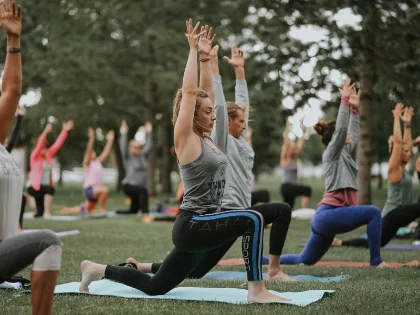Overcoming Yoga Anxiety: Tips For Nervous Beginners
Using techniques that reset your nervous system can help reduce feelings of overwhelm during stressful situations. This can be exercising, having a conversation with a friend, doing yoga, or engaging in mindfulness meditation. Studies have shown that yoga can help physically reduce stress and anxiety symptoms by slowing the heart rate and promoting calm. Additionally, it encourages self-compassion and mindfulness.
Inhaling
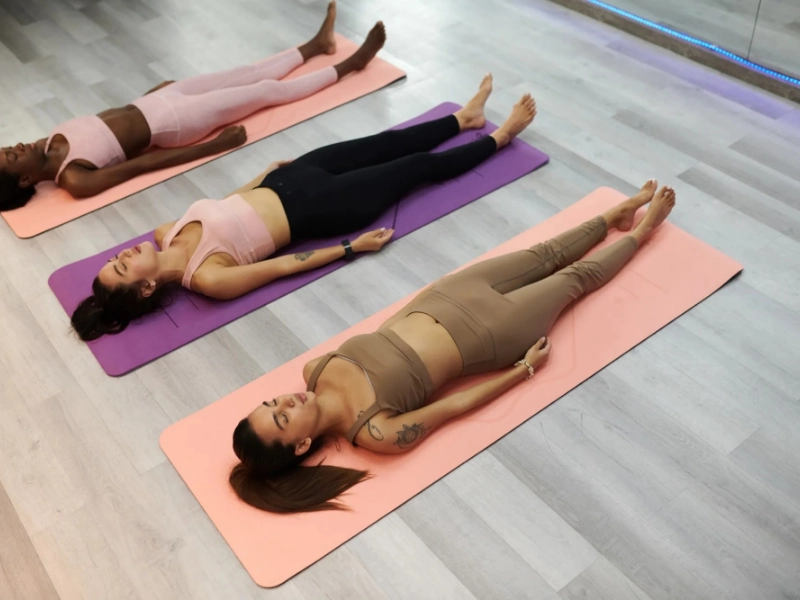
Meditating
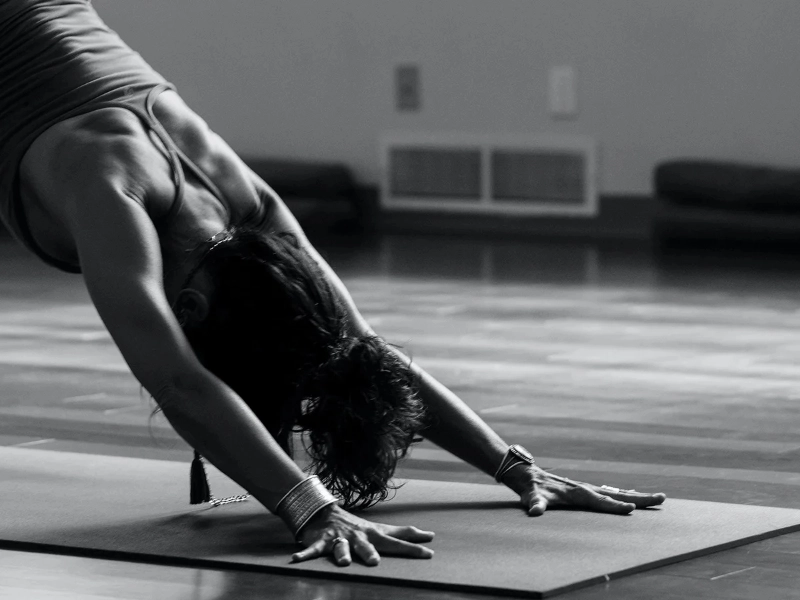 Meditation helps a lot of yoga practitioners who suffer from anxiety. In addition to promoting mental calmness, meditation also helps people comprehend themselves and their place in the universe on a deeper level. Additionally, it can support the transformation of unfavorable inner narratives that breed stress and anxiety.
Some people find that repeating a mantra or a prayer, along with positive statements about their value and affection, is beneficial. This gives you a sense of security and a greater sense of power that is watching out for you.
According to Knopik, some people with high levels of sympathetic nervous system activity may find that their current positions are overstimulating. A slower-paced practice that emphasizes breathwork and a contemplative mood might be more helpful for these people. This includes chanting and singing devotional music that exudes confidence and positive energy.
Meditation helps a lot of yoga practitioners who suffer from anxiety. In addition to promoting mental calmness, meditation also helps people comprehend themselves and their place in the universe on a deeper level. Additionally, it can support the transformation of unfavorable inner narratives that breed stress and anxiety.
Some people find that repeating a mantra or a prayer, along with positive statements about their value and affection, is beneficial. This gives you a sense of security and a greater sense of power that is watching out for you.
According to Knopik, some people with high levels of sympathetic nervous system activity may find that their current positions are overstimulating. A slower-paced practice that emphasizes breathwork and a contemplative mood might be more helpful for these people. This includes chanting and singing devotional music that exudes confidence and positive energy.
Concentrate
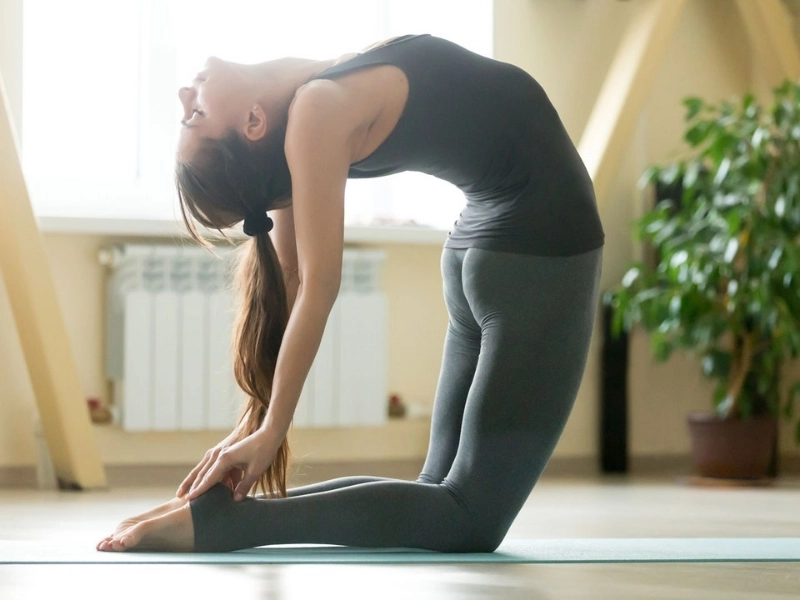 Yoga can help you maintain your sense of balance by helping you to stop worrying about the future and concentrate on the here and now. Additionally, it can assist you in forming wholesome, constructive habits that will support your ability to maintain composure under pressure.
Yoga has been demonstrated in numerous studies to alleviate the symptoms of generalized anxiety disorder, which is typified by enduring sensations of trepidation and concern. When weighed against cognitive behavioral therapy (CBT), which is regarded as the most effective treatment for anxiety, the advantages of yoga are nevertheless somewhat diminished.
It's crucial to see your doctor before beginning any yoga practice in order to control your anxiety. It's also critical to keep in mind that yoga should only be utilized as a component of a comprehensive therapy plan; it is not a panacea.
Yoga can help you maintain your sense of balance by helping you to stop worrying about the future and concentrate on the here and now. Additionally, it can assist you in forming wholesome, constructive habits that will support your ability to maintain composure under pressure.
Yoga has been demonstrated in numerous studies to alleviate the symptoms of generalized anxiety disorder, which is typified by enduring sensations of trepidation and concern. When weighed against cognitive behavioral therapy (CBT), which is regarded as the most effective treatment for anxiety, the advantages of yoga are nevertheless somewhat diminished.
It's crucial to see your doctor before beginning any yoga practice in order to control your anxiety. It's also critical to keep in mind that yoga should only be utilized as a component of a comprehensive therapy plan; it is not a panacea.
Establishing a foundation
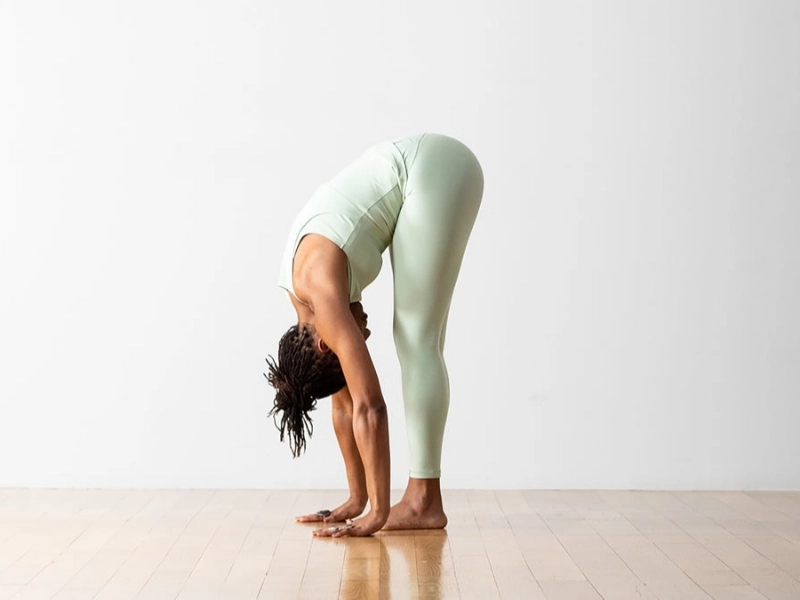 Yoga is a useful technique for anxiety management. In combination with psychotherapy, meditation, and medication, it can improve one's sense of control, self-efficacy, and capacity to manage anxiety in stressful situations.
Grounding is a key component of yoga that helps students feel rooted in their bodies and in the soil. A body scan can be used as a cue to help students recognize and feel the weight of their feet, legs, hips, and other body parts during grounding exercises. Additionally, students can ground themselves through imagery and visualization. For example, they could picture their ideas as snowflakes floating in the air on the inhale and falling to the ground on the exhale.
Easy Pose, which allows practitioners to locate their center and ground themselves, is one of the finest yoga poses for anxiety. Furthermore, by supporting the back muscles, this seated posture aids in the relief of tension and exhaustion.
Yoga is a useful technique for anxiety management. In combination with psychotherapy, meditation, and medication, it can improve one's sense of control, self-efficacy, and capacity to manage anxiety in stressful situations.
Grounding is a key component of yoga that helps students feel rooted in their bodies and in the soil. A body scan can be used as a cue to help students recognize and feel the weight of their feet, legs, hips, and other body parts during grounding exercises. Additionally, students can ground themselves through imagery and visualization. For example, they could picture their ideas as snowflakes floating in the air on the inhale and falling to the ground on the exhale.
Easy Pose, which allows practitioners to locate their center and ground themselves, is one of the finest yoga poses for anxiety. Furthermore, by supporting the back muscles, this seated posture aids in the relief of tension and exhaustion.
Encouragement
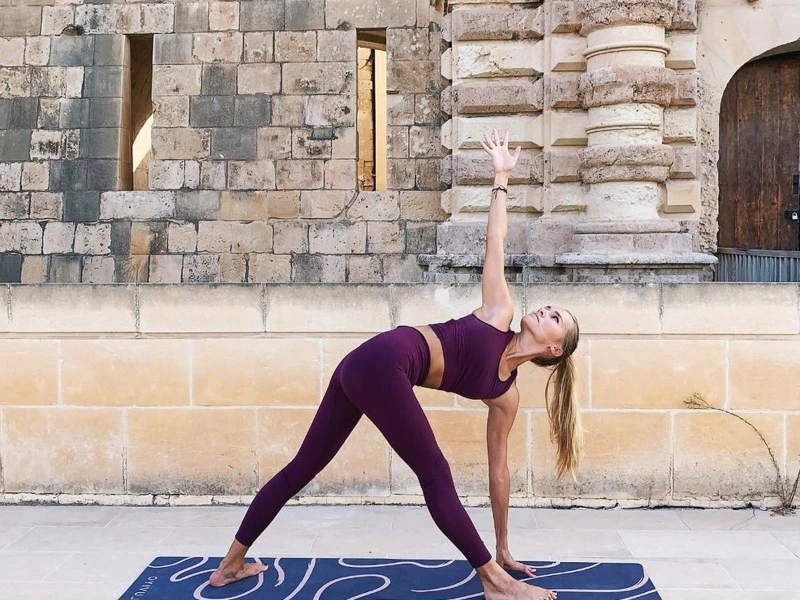 Anxiety is a normal human response to stress and can manifest as physical symptoms like palpitations and headaches. Although yoga isn't meant to be a treatment for anxiety, it can be a useful tool for soothing the body and mind when done under the guidance of mental health specialists, in addition to other therapies like psychotherapy or medication.
It is advised that individuals experiencing extreme anxiety participate in a more structured program run by a licensed mental health professional. This might involve anxiety-specific classes, in addition to at-home breathing exercises and relaxation methods. Finding a calm, secure area to unwind is crucial when practicing at home. When it comes to managing anxiety, a serene setting is crucial.
Anxiety is a normal human response to stress and can manifest as physical symptoms like palpitations and headaches. Although yoga isn't meant to be a treatment for anxiety, it can be a useful tool for soothing the body and mind when done under the guidance of mental health specialists, in addition to other therapies like psychotherapy or medication.
It is advised that individuals experiencing extreme anxiety participate in a more structured program run by a licensed mental health professional. This might involve anxiety-specific classes, in addition to at-home breathing exercises and relaxation methods. Finding a calm, secure area to unwind is crucial when practicing at home. When it comes to managing anxiety, a serene setting is crucial.








